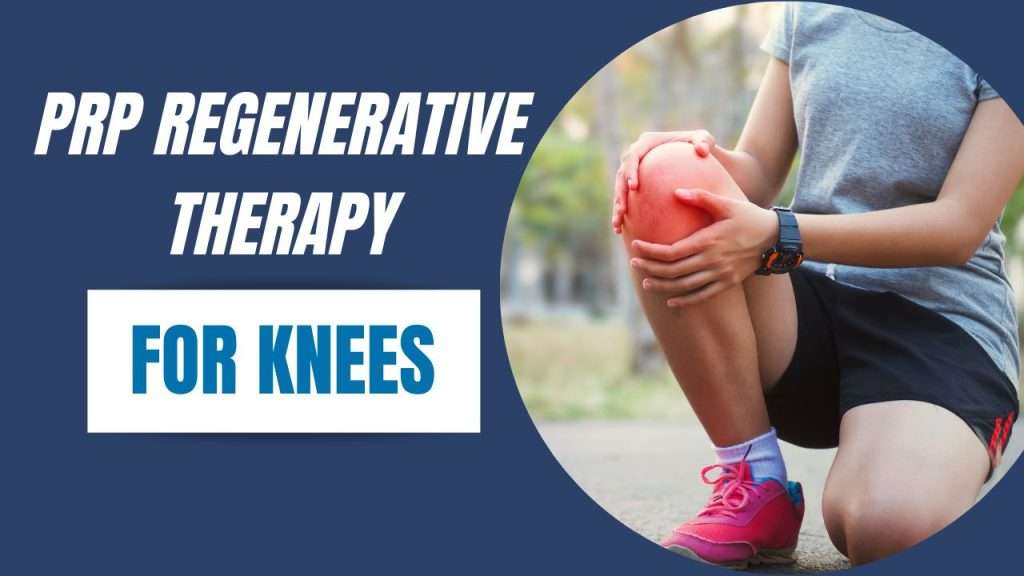PRP Regenerative Therapy: An Effective Treatment For Knee Osteoporosis

Several studies suggest that regenerative therapy for knees can alleviate their pain and enhance functionality in individuals with knee osteoarthritis. The duration of the benefits from regenerative therapy for the knees can differ with some people experiencing long-term relief, while others may require multiple treatment sessions. It is essential to consult with our Pain Doctors specialists to understand the expected length of treatment.
Platelet-Rich Plasma (PRP) Therapy
PRP therapy is a common and effective regenerative procedure for knee pain. It involves injecting a concentrated solution of platelets into the affected joint. There are cells essential for clotting and tissue repair and this process uses a person’s own cells for treatment or prevention of a medical condition. The process involves collecting a small sample of blood, separating the platelets from red blood cells using a centrifuge, and then injecting the concentrated platelets into the affected area.
A study on PRP was conducted with the purpose to assess the effectiveness and safety of Platelet-Rich Plasma (PRP) injections for patients suffering from knee osteoarthritis.* PRP is a blood product composed of a high concentration of growth factors, cytokines, and modulating factors which has displayed positive outcomes when used in treatments. 72 males and 81 females ages ranging from 40-81 received three weekly consecutive PRP injections and completed required follow ups. The results of this study showed a significant reduction in pain levels while MRI scans showed a slight improvement in cartilage thickness in the tibial and femoral plates. The study concluded that PRP injections prove to be an effective and conservative treatment option for reducing pain, enhancing quality of life, and improving function, even after 6 months of follow-up. Patients with knee osteoarthritis who received PRP intra-articular injections also showed the highest overall success compared to those who received steroids, hyaluronic acid, and placebo, as assessed at 3, 6, and 12-month follow-ups.
PRP’s benefits in treating joint diseases are supported by multiple studies, with patients reporting decreased pain. For many, the treatment also leads to improved physical function. There was a statistically significant improvement for physical function of both genders. Previous studies have also observed pain reduction from PRP injections, which are believed to work by influencing mediator expression and promoting cartilage matrix synthesis.
Is Regenerative Therapy For Knees A Good Option For Me?
If you suffer from persistent knee pain, consider PRP regenerative treatment.
PRP is a treatment for promoting tissue regeneration, reducing pain, and healing injuries without the need for medication or surgery. Dr. Ilana Etelzon, a board-certified specialist in Physical Medicine and Rehab/Interventional Pain Management in NYC specializes in this treatment and works with patients to create personalized plans. Don’t let knee osteoporosis or any knee injury stop you from living a life free of pain and full of health.
Find out if PRP Regenerative Treatment is right for you today by contacting one of our centers:
Brooklyn Office | 718.682.3686
Spring Valley Office | 844.373.2772
Newburgh Office | 844.373.2772
Clifton Office | 718.682.3686
Knee Osteoporosis
In knee osteoarthritis, PRP injections are administered into the knee to enhance healing and rejuvenation. The degradation of cartilage is a key factor in various joint disorders, including osteoarthritis.. Osteoarthritis is a widespread, degenerative knee condition that affects not only the intra-articular, tibiofemoral, and patellofemoral cartilage but also the surrounding joints and structures with musculoskeletal pain and movement restriction being common symptoms. The percentage of people with this condition is expected to increase over the next 10 years due to the growing rate of obesity and of the population’s average age.
Chronic inflammation is a contributing factor in knee degeneration. When the knee is persistently swollen, it initiates the next stage of degeneration, the breakdown of structural tissues such as bones, cartilage, ligaments, and tendons. Anti-inflammatory medications and cortisone shots may be prescribed to alleviate the inflammation, but they can actually impede the healing process. Instead of relying on these medications, it’s important to allow the natural healing process to occur which is where PRP treatment makes all the difference. With the ability to counteract inflammation and relieve inflammatory pain, PRP acts to change the molecular composition of the synovial fluid, which is the source of swelling, thus disrupting the cycle of inflammation. Intra-articular injections of PRP can provide a balance of pro-inflammatory and anti-inflammatory factors, improve macrophage function for clearing damaged tissue, and regulate immune responses within the knee.
*Moretti L, Maccagnano G, Coviello M, Cassano GD, Franchini A, Laneve A, Moretti B. Platelet Rich Plasma Injections for Knee Osteoarthritis Treatment: A Prospective Clinical Study. J Clin Med. 2022 May 8;11(9):2640.

